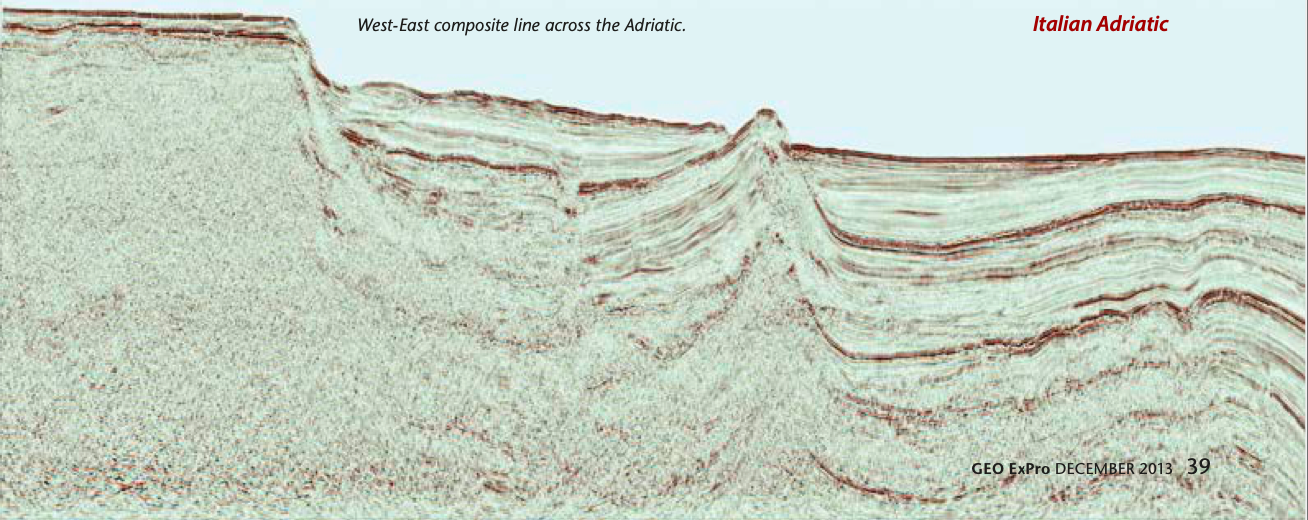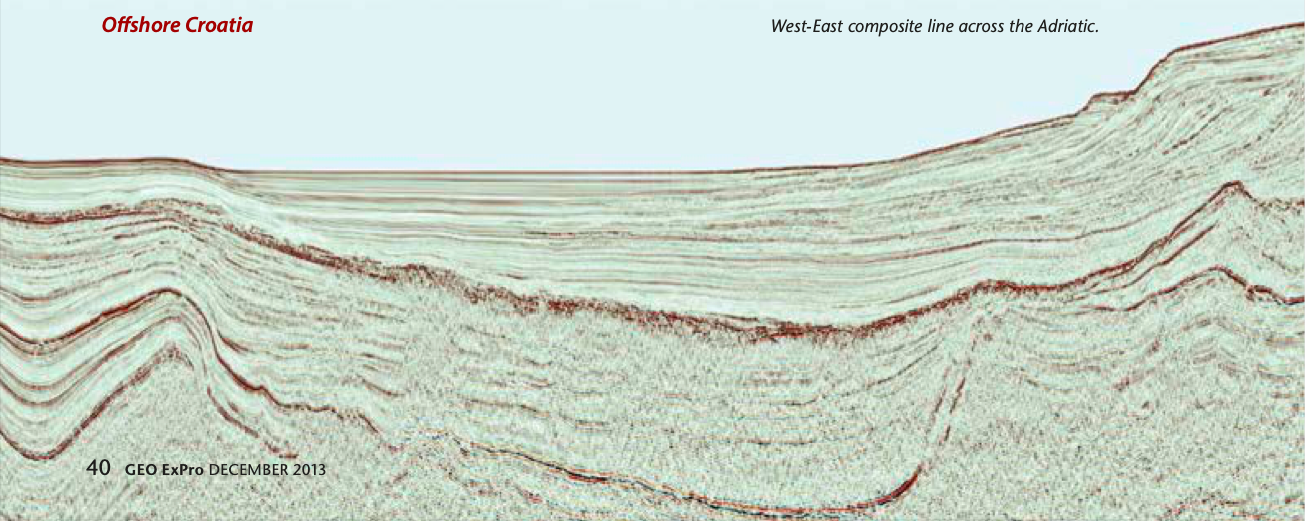A new wave of exploration offshore Croatia
Proven hydrocarbon systems, shallow waters and proximity to hungry energy markets: is it time for Croatia to emerge from the shadows of its neighbour on the other side of the Adriatic Sea?
The Adriatic is the most prolific hydrocarbon province in the northern Mediterranean, with over 20 biogenic gas fields and a number of thermogenic oil fields in production. Exploration activity in the Adriatic, however, has been heavily skewed in the past between Italy and Croatia, such that whilst the Italian Adriatic is relatively well explored, the eastern Croatian margin remains comparatively untouched. This is about to change as the Croatian authorities are committed to holding a licensing round in Q2 of 2014, ushering in a new wave of exploration offshore Croatia.
As an exploration arena, the Adriatic is attractive. There are proven hydrocarbon systems, most of the basin is in less than 200m of water (only deepening in the south to about 1,000m of water), and it is located in Europe, close to significant energy markets. The Northern Adriatic is already endowed with Plio-Pleistocene biogenic gas fields, whilst to the south a number of Mesozoic oil discoveries have been made offshore Italy, demonstrating a working Mesozoic oil system.
However, of late, exploration activities in Italy have slowed due to time-consuming consents and regulatory issues, while activities in Croatia had all but stopped, as the indigenous oil industry was restructured and privatised. The forthcoming Croatian licensing round will, however, rejuvenate activity, and this will be facilitated by Spectrum’s on-going seismic acquisition of more than 12,000 line kilometres of long-offset 2D data and the availability of a re-conditioned well dataset.
Improved data quality
The dichotomy of historic exploration intensity across the Adriatic was in part due to the quality of the available seismic data on the Croatian margin, which were acquired in the 1970s and 80s, since when, seismic acquisition and data processing techniques and capabilities have developed significantly. Longer streamers are now used, producing seismic data of much higher fold, allowing improved noise cancellation from the data, and also imaging far deeper into the subsurface than ever before. Spectrum’s programme uses an 8.1 km streamer length, rather than the legacy data’s 3–4 km. Advances in data processing de-multiple techniques such as Surface Related Multiple Elimination (SRME) and Hi- resolution Radon are also far more effective than technologies available in the 1970s and 80s. In addition, the use of Pre Stack Time Migration (PreSTM) and dense automatic velocity analyses using second and fourth order updates gives better imaging, and provides higher quality gathers for velocity estimation and production of AVO-friendly products.
To take advantage of these technological advances Spectrum are also reprocessing ca. 9,000 km of older legacy data from which good uplift in quality can be expected. This reprocessed data will be particularly useful in the shallow water areas close to the environmentally sensitive coastline and around the existing production infrastructure, which are being avoided by the new acquisition.
Importantly, the new seismic dataset being acquired in Croatia is being tied to data available on the Italian margin, allowing for the first time a pan-Adriatic understanding. The figure below shows such a dip-line composite. Interestingly, the large four-way structures seen on the line in the centre of rock in the basin are both undrilled.

Hydrocarbon geology of the Adriatic
The Adriatic is a uniquely structured basin comprising a oil-stained carbonates are exposed, and oil was recovered from double foreland between opposing thrust fronts. The great nappes of the eastward verging Apulian thrust belt forming mountain belt onshore Italy frame the west of the Adriatic. To the east in Croatia, a west-verging Dinaride thrust belt forms the island chain of the Dalmatian coast and survey are the Dinaric mountains.
Compression from both east and west has unsurprisingly thrust and folded the foreland Adriatic, generating a number of promising structures comprised of Miocene to Jurassic-aged carbonates. The new seismic, tied to the key wells that Spectrum are conditioning, will allow the structural restoration of the Mesozoic section. Additionally it will also allow the mapping of depositional facies belts within the repeated carbonate platform sequences running parallel to the coast along this margin. This will allow the identification of many new shelf margin carbonate plays previously obscured due to poor seismic resolution. The younger Tertiary clastics derived from the Po valley of Italy and the Neretva River of Croatia have built deltas onto a seabed topography influenced by the underlying structure. This interaction between structure and sedimentation has resulted in abundant stratigraphic and structural plays. Although many have been exploited in the north, where there are 20 gas fields on production in the Po valley basin, data from the new acquisition indicates that the Neretva River delta looks promisingly untapped in central-south Adriatic. The new seismic is also revealing the presence and distribution of an extensive salt diapir province offshore Croatia. Interaction of this Triassic salt with both the Mesozoic carbonates and clastic plays of the Tertiary has resulted in numerous untested plays in the basin.

It is interesting to speculate on the association of oil source rocks and salt provinces, as globally there is often a causal association between these two. The main oil-prone source rock in the Adriatic is the Upper Triassic, which was deposited in a restricted shallow sea environment and characterised by marine Type II kerogen. This is a dominant source rock both for accumulations onshore Italy and to the east onshore Croatia and Albania. In both the adjacent thrust belts Triassic source rock and coil-stained carbonates are exposed, and oil was recovered from the Triassic of the Vlasta-1 well, offshore Croatia.





